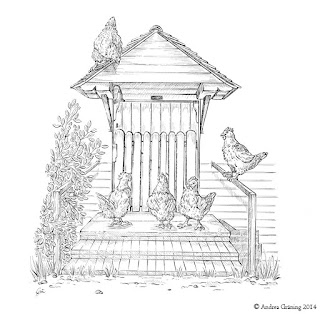Wolverine
Until late 2008 I had never been a needlewoman; I had learned a few basic stitches and other simple things in primary school but that was a long time ago and everything I had learnt back than has already been forgotten. Anyway, one day I decided to sew a life-sized wolverine, an animal I admire a lot, as a birthday present for a friend. In the end, I did not finish it in time (the present was finished in 2009 and about ten months late), partly due to me being a complete beginner, partly because everything was done by hand, and partly because of the details (for example, the wolverine has 20 individual claws). Pattern by me.
Useful things for the sewing box
Five years later, early in 2014, I began to entertain the idea of creating a cosplay costume of Lirenda, a character from the "Wars of Light and Shadow" by author and artist Janny Wurts. Although I have never been much of a fan of her, she seemed like a good choice due to her style of clothing which certainly is not plain.
So, I got out my sewing box, bought a proper sewing book and made a few small and simple pieces for my sewing box in order to practise different stiches etc. The result was not too bad, although far from great, given my experience with the needle (or lack thereof). The first piece was a bag for my needles (top left, closed, and bottom left, open), the second one was a pouch for the chalk (bottom right), and the last one was another pouch for buttons (top right). Patterns by me.
Skirt "Rathain"
However, soon after I realised that it is completely stupid attempting to sew a complicated dress when I had never made any kind of clothing before. Thus I decided to practise a bit more and began working on a skirt that was meant to be inspired by the country Rathain in the aforementioned series of books by Janny Wurts. Initially, I intended to adorn the green and black skirt with an embroidered kietienn, a small (fictive) leopard and heraldic animal of Rathain. But due to lack of experience I again decided to practise embroidering with a smaller project (see shoulder bag) and while working on this other piece I realised that the kietienn may not be such a great choise for the skirt. So, at the moment I am thinking about some other kind of embroidery work for the skirt that would still be in keeping with the Rathain theme.
Unfortunately, at the moment I am unable to make any pictures of the skirt thanks to the weather (not much sunlight).
Shoulder bag "Kietienn"
The design of the heraldic animal of Rathain is taken straight from the cover of the third volume of "Wars of Light and Shadow": "Warhosts of Vastmark", so the design is by Janny Wurts, not me. I merely made the stencil, traced it on the fabric with chalk and then got started. For the black outlines the stem stitch was used. What lies ahead of me next is doing the leopard's coat, which should keep me busy for quite some time.




















